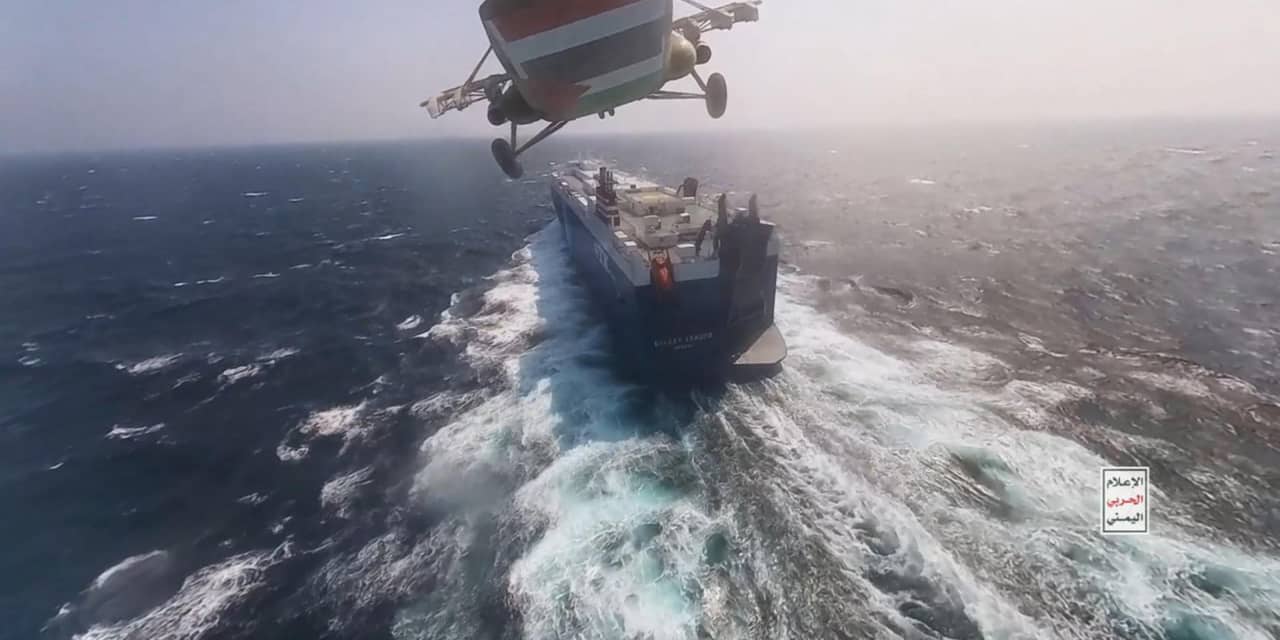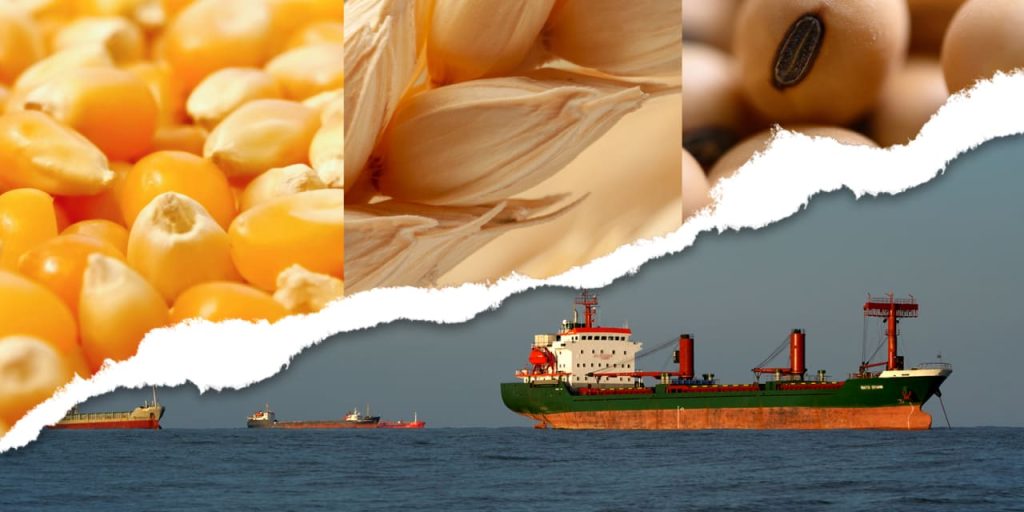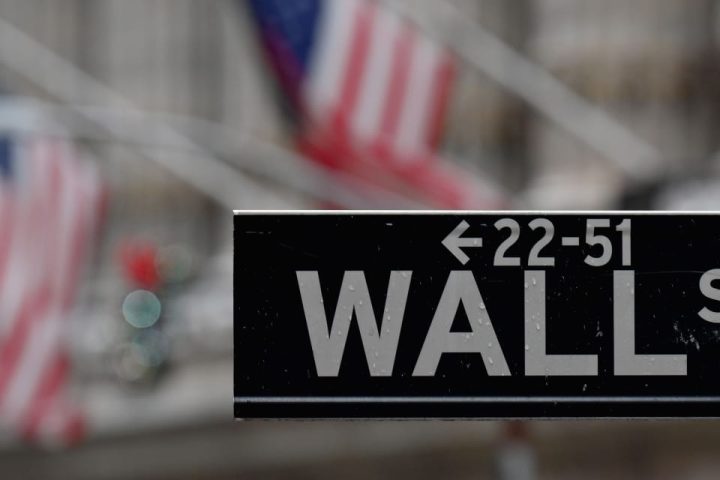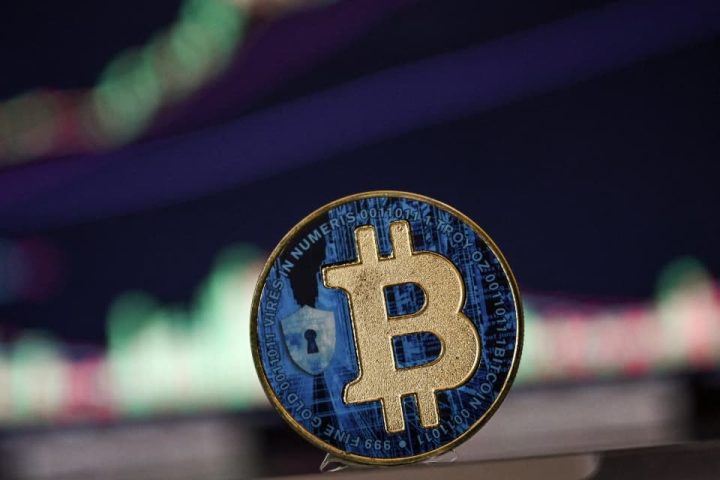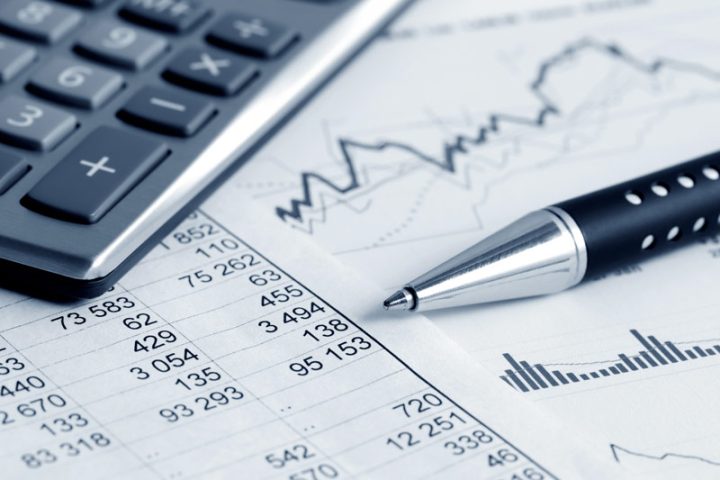““The modern world has not freed itself from distance and geography; it still relies on a network of vulnerable physical links. Few nonexperts are aware of those weak links and of the nonlinear effects that could unfold if the system is disrupted by long-tail events.””
That was the introduction to a report put out by a team of strategists at Deutsche Bank in October that focused on “invisible networks” — the seas, skies, roads, pipes and space — where often there is no easy alternative in case of disruption such as a gas pipe leak, a stuck container or war.
The report could not be more timely given what has been happening in recent months with attacks on vessels in the Red Sea by Iran-backed Houthi militants, following Israel’s war with Hamas that broke out in early October.
Oil major BP
BP,
along with container companies A.P. Moller-Maersk
MAERSK.B,
and Hapag-Lloyd have all been forced to reroute their ships. Maersk said its ships, of which 20 were waiting Monday, will now traverse around the Cape of Good Hope, which is at the southern tip of Africa.
As MarketWatch has reported, the effect of the disruption is seen as the riskiest for “global container ships, oil tankers and dry bulk” goods, in order of impact. Analysts have said is the duration of the disruptions that matter.
The Deutsche Bank strategists flagged eight major maritime chokepoints in their Oct. 17 report, noting five of those were “keys that unlocked the world” for the British Empire.
Those include the Cape of Good Hope, the Panama Canal, Strait of Gibraltar, Turkish Straits, Strait of Hormuz, Strait of Malacca, Suez Canal and Strait of Bab el-Mandeb, which is the waterway currently under siege. Dover Strait is considered a secondary checkpoint, they noted. Those were laid out in this chart below:
Deutsche Bank’s Adrian Cox, Jim Reid and Galina Pozdnyakova noted that even if oceans cover much of the earth’s surface, most international traded goods have at some time passed through seven narrow chokepoints and/or the Cape of Good Hope. Explosive growth in Asia has sent ever more goods through those.
Read an archived story on the importance of the Strait of Hormuz
They said 60% of oil supplies travel via sea, with the Strait of Hormuz, just 33 kilometers at its slimmest point, ushering through tankers that carry around a fifth of the world’s entire oil consumption and one-third of its liquefied natural gas.
The Strait of Malacca is the second most crucial oil chokepoint, carrying 80% of China’s oil imports between the Indian and Pacific Oceans.
including about 80% of China’s oil imports.
Additionally, more than 20% of soybean exports go through the Panama Canal; 20% of wheat through the Turkish Straits, which is under pressure from Russia’s war in Ukraine; and 20% of rice goes through the Strait of Malacca. A quarter to a third of fertilizers pass through Straits of Malacca, Gibraltar and Bab el-Mandeb, and the Suez Canal. The global food chokepoints are laid out in another chart:
Apart from the current Israel-Hamas and Russia-Ukraine wars, they gave an example of a major incident in March 2021, when the 193-kilometer (119-mile) Suez Canal, linking Europe to Asia, was blocked for six days after the massive Ever Given containership ran aground. It held up $9.6 billion worth of goods on 360 vessels blocked on either side.
A workaround between Singapore to Rotterdam around the
southern tip of Africa would have added 3,500 additional nautical miles and nine more days.
The strategists said that while the Strait of Malacca and Dover Strait have the most accessible alternative maritime routes, the Strait of Hormuz and the Turkish Straits have no ready alternatives.
As for efforts to ease future issues on these waterways, the strategists noted parts of both the Suez Canal and Panama Canal are being widened, land routes are being developed, along with a new pipeline — the Suez-Mediterranean oil pipeline.
And climate change itself is opening up northern passages such as the Bering Strait between Russia and the U.S. But a blog of the Polar Institute pointed out earlier this year, that the Bering Strait is considered a “highway” for marine wildlife, with thousands of seals, whales and other animals migrating every year. Increased ship transports puts those ecosystems at risk.
Also read: Cables, the sky and sea. These are some of the global economy’s weakest links.
Read the full article here
